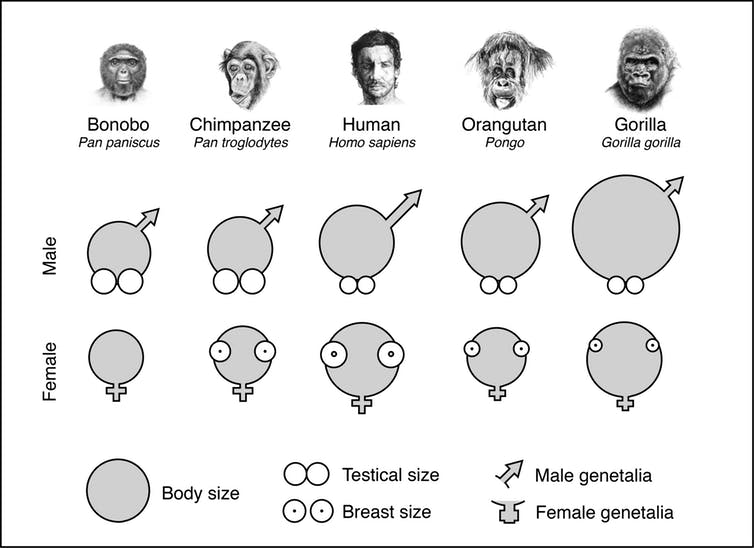Among great apes, humans have longer and wider penises
Penises of humans are much longer and wider than the penises of other great apes. Human females, too, have larger genitalia and breast size compared with other direct wild relatives.
On the other hand, human testicles are smaller than the balls of bonobos, chimpanzees, orangutans, and gorillas. Why so?
Scientists have noticed that a chimpanzee’s testicles weigh more than a third of its brain while human’s weigh less than 3%. Penises, on the contrary, are smaller with our closest relatives. Even the largest gorillas, which on average are at least twice as heavy as humans, have a penis just two and half inches long when erect.
An article published in the Conversation explains that the proportions of penis and testicles depend on the mating strategies and social relationships within the species.
According to researchers, primates display all sorts of mating behavior, including monogamous, polygynous (where males have multiple mates) and multimale-multifemale. One indicator of behavior in a species is the size difference between males and females, known as sexual dimorphism. The greater this dimorphism is, the more likely the mating is either polygynous or multi-male to multi-female, observations of chimpanzees and gorillas show.

Great ape sexual organs, compared for size (bonobos are flat chested until they get pregnant). Credit: Mark Maslin, "The Cradle of Humanity"
“Male chimpanzees are much larger than females, and they have a multi-male to multi-female mating system. Essentially, male chimps have sex all the time with any female and with any excuse.







